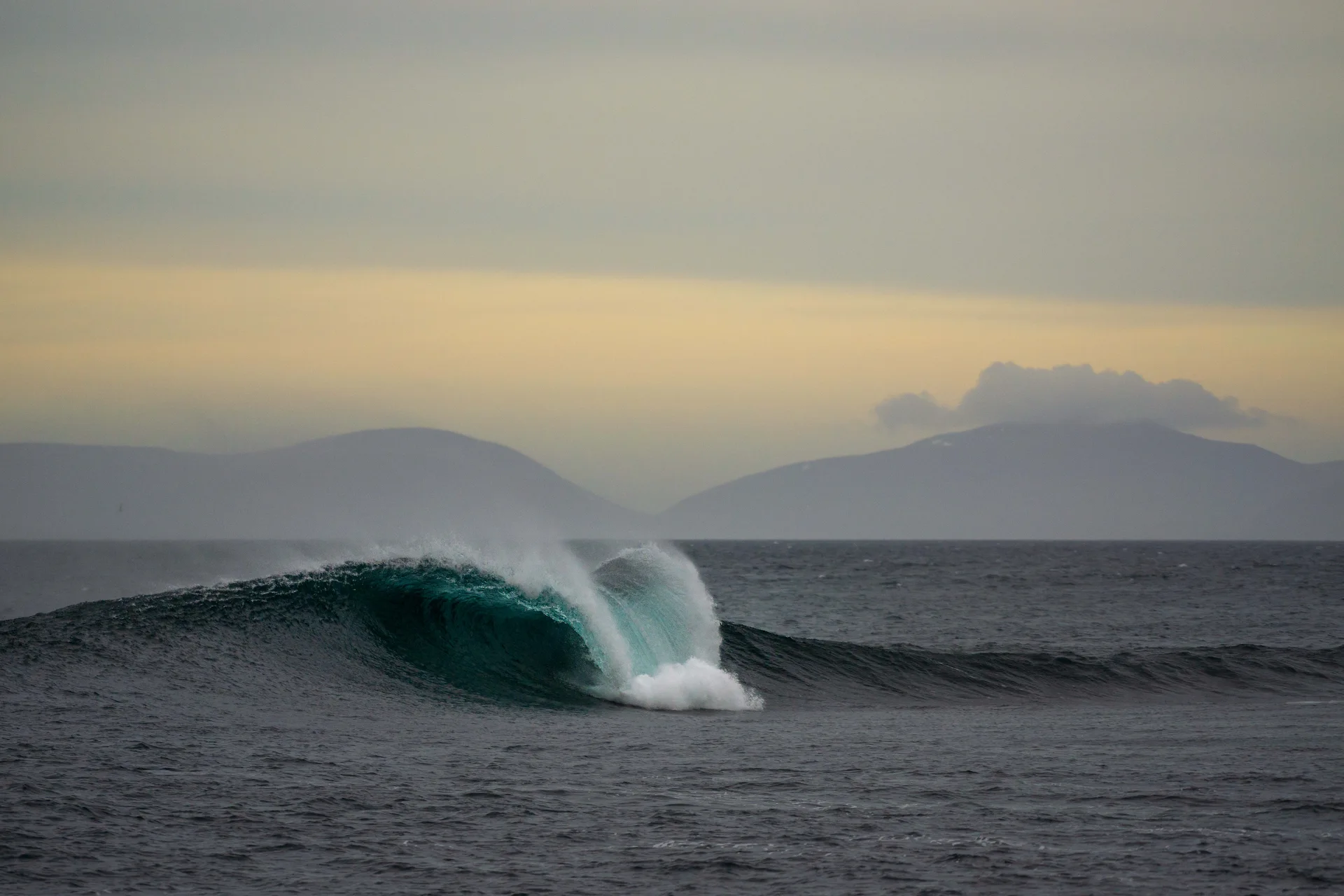New Research on Noise Pollution
Discover how noise affects marine wildlife and what can be done about it

Many marine species rely on sound to navigate, find prey, avoid predators and communicate with each other. But these behaviors can be disrupted by human-caused noise from sources such as commercial shipping, seismic surveys, oil exploration and military sonar. For many marine mammals, ocean noise (also known as noise pollution) can disturb feeding, resting and breeding behaviors, and can cause hearing loss, physical injury and chronic stress. Noise pollution can also lead to beaching and can mask the sounds of oncoming ships, resulting in potentially fatal ship strikes. Ocean Conservancy is increasingly concerned about underwater noise pollution and is calling for the implementation of known solutions.
In a recent study published in Current Biology, dolphins increased the volume and duration of their calls to one another in noisy areas and were less able to cooperate with each other on tasks when exposed to more noise. Basically, the dolphins had to shout to one another in order to communicate. While scientists already knew that noise pollution has a negative impact on a variety of marine animals, this study showed for the first time how noise pollution impacts animals’ abilities to cooperate and work with one another. Scientists now believe major port areas, like Los Angeles or Boston, are experiencing a dearth of dolphins because the regions have become too loud for them to safely communicate.
Get Ocean Updates in Your Inbox
Sign up with your email and never miss an update.
Ships provide the most pervasive source of anthropogenic or human-caused noise in the ocean, especially in the form of low-frequency noise from engines and propellers. Shipping noise has doubled each decade since 1960 when it was first measured. This increase has been seen even in the most remote areas of the world, including the Arctic, which has experienced even higher increases in noise levels. This is of particular concern because many Arctic Indigenous peoples hunt marine mammals as both a vital source of food and a central component of their culture. Indigenous hunters have expressed concern that sound from transiting vessels may displace the marine mammals they depend on. In one example, researchers in Canada observed beluga whales that avoided ice-breaking vessels and altered their behavior for several days.
There have been brief periods of time when shipping noise decreased, showing what quieter waters can do for marine animals. When ship traffic off the northeastern United States was all but stopped after the attacks on September 11, 2001, North Atlantic right whales displayed a sharp decrease in stress-related hormones. Similarly, when the world came to a halt due to the COVID-19 pandemic, international shipping declined by a fifth in just a few months, resulting in a decrease of about a quarter of the noise in our seas. As one outcome, orcas in Scotland and Canada were found closer to shore. A complete absence of cruise ships in 2020 in Glacier Bay, Alaska, enabled researchers to gather data on the implications of quieter seas for humpback whales and harbor seals.
Fortunately, a variety of ship design, maintenance, operational measures and policy solutions can decrease underwater noise and its adverse impacts. Vessels can maintain polished, clean hulls and propellers, insulate engines and use resilient mountings on machinery, modify propellers to reduce cavitation (the formation of bubbles on the propeller), or simply slow down below cavitation inception speed to reduce noise. Incentives for using quieting technologies can also be effective. The Port of Vancouver awards vessels that reduce underwater noise with up to a 47% discount in harbor fees. Last but not least, routing measures and closures may also be helpful in the context of noise disturbance. Incorporating noise impacts into spatial planning may improve ecological integrity and species resilience in certain regions.
The tools to reduce underwater noise from ships are available. For industry to adopt those tools across the global commercial shipping fleet, regulation is needed. However, underwater noise from ships is not currently regulated. Ocean Conservancy is working at the International Maritime Organization (IMO) to improve uptake of its Voluntary Guidelines for the Reduction of Underwater Noise from Commercial Shipping to Address Adverse Impacts on Marine Life. The guidelines call for the measurement of shipping noise, identify models to determine effective quieting measures, provide guidance to enable construction of quieter ships and reducing noise from existing ships, and outline operations and maintenance measures that can help minimize noise. However, to be effective, the process must include mandatory measures to ensure industry-wide action. This can include setting quantitative noise targets for ships to meet and onboard monitoring of ship noise to enable real-time adjustments.
In order to pursue mandatory measures, Ocean Conservancy needs your help! Donate today to protect our ocean from noise pollution. Stay tuned for more information about noise impacts on the marine environment.